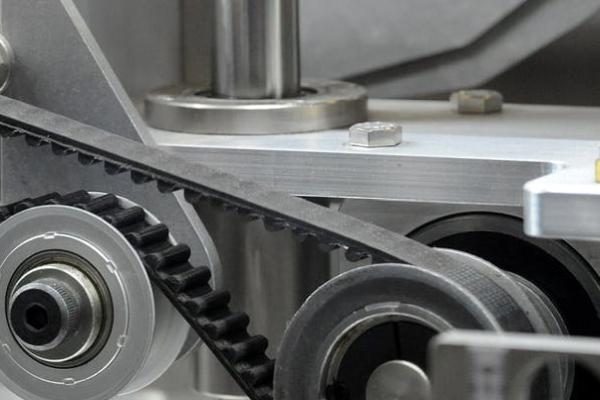Published on the 22/01/2018 | Written by Andrew Mellor

The manufacturing industry is expanding faster than ever, wires Oracle NetSuite’s Andrew Mellor…
With an impressive growth rate in the latest Manufacturing Purchasing Managers Index (PMI), it will be interesting to see what lies ahead for Australian manufacturing in 2018 and beyond. The PMI jumped by 6.20 points to 57.20 in November 2017 and measures changes in activity levels across Australia’s manufacturing sector from one month to the next. Anything above 50 signals that activity levels are improving while a reading below suggests they’re deteriorating. Can we expect to see more ‘smart’ factories across Australia? Will more Australian businesses embrace automation, cloud computing and Industry 4.0 data exchange? Can we expect to see improvements in workplace safety? The answer to all these questions is a definite ‘yes’ and below are the trends that will facilitate these changes: Internet of Things and cloud will account for high-growth IT spending in general in Australia, with IoT as an innovation driving IT spending growth in manufacturing and utilities; and high-level programming languages to unify and simplify automation programming. This will see IT professionals entering the automation field more easily, creating a huge talent pool and bringing in more creativity and rapid changes, helping more Australian manufacturers bringing their operations back to home soil. Automation will also bring with it reduced labour costs and higher productivity, which will increase the demand for higher skilled and better paid jobs. 2. Data-Driven intelligence with analytics Analytics tools are a key part of that innovation, especially when applied across the value chain, including predictive maintenance, logistical tracking for operational efficiencies, quality control and service offering. The convergence of cloud platforms, integration technology and analytic tools is turning the promise of data-driven insights into reality, and we are expected to see more of it in 2018. 3. Omnichain: The manufacturing cloud Omnichains encompass all supply chain processes, from an internal plant floor to a network of third-party partners. It makes real-time data available to all authorised stakeholders. The result: on-demand visibility across many moving parts, better flexibility to adapt to disruptions and tighter controls with exceptional speed of execution. In the manufacturing cloud, it’s irrelevant whether you make a product yourself in your own facility, outsource it entirely to a 3rd party or do any combination of this. It ensures global manufacturing without compromise and the same level of control, data assurance and visibility regardless of where, what, when or who is doing the manufacturing. 3D printing production is still in its infancy, but it is already witnessing rampant growth in Australia. While its commercial applications have been limited to prototyping, industrial 3D printing has reached its tipping point, and is expected to go mainstream in a way that will revolutionise the economy. Gartner predicts 75 percent of 3D printing globally will be used for creating custom tools for manufacturing by 2020. The technology has already been used to create physical replicas of new parts or product designs which leads to enormous reductions in time and cost for companies, reducing the need for creating a new product every time, which is time consuming and not always free of errors. Industrial robots have also come a long way, providing benefits like worker safety by taking care of hazardous operations by welding and handling dangerous chemicals, and taking over repetitive tasks while reducing time, effort and improving efficiencies. 5. Future-proof flexibility manufacturers know all too well that the pace of change is accelerating. IoT was a twinkle in the eye a few years ago. It’s suddenly a very real phenomenon that’s rewriting the rules of high-performance manufacturing. So, what’s next? Blockchain technology stands to improve traceability and compliance with a shared ledger across supply chain networks. As an example, an automaker which releases a vehicle containing faulty parts resulting in costly recalls and repairs can use the blockchain to trace the supplier of the faulty parts more efficiently, containing the issue and reducing time and labour costs. Artificial intelligence (AI) is growing rapidly in consumer and industrial applications. In 2018, Gartner believes that organisations will be expanding the scope of projects and focusing on building an overall AI strategy/foundation. With all these developments and changing industry landscapes, what’s needed is future-proof flexibility in a cloud-based IT environment that lets an organisation quickly experiment with new technologies and deploy them into production if value is there. Andrew Mellor is Sales Director ANZ, Manufacturing and Distribution, at Oracle NetSuite.
Organisations are expected to spend up to AU$84.8 billion on technologies that allow them to run their systems in the cloud in 2018.
Many manufacturers have experimented with predictive analytics in recent years with mixed results. Done right, analytics yield insights to improve every aspect of manufacturing, from engineering and design to production, machine utilisation, workforce productivity, supplier performance and demand forecasting. It can mean better products, lower costs, and higher margins. In fact, according to McKinsey in 2016, analytics tools increased gross margins for manufacturers by up to 40 per cent.
More manufacturers will embrace the ‘omnichain’ in 2018 — a cloud model that unifies internal and external processes across extended networks.




























